Canalys & Gartner: AI investments drive growth in cloud infrastructure spending
According to market research firm Canalys, global spending on cloud infrastructure services [1.] increased by 21% year on year, reaching US$82.0 billion in the 3rd quarter of 2024. Customer investment in the hyperscalers’ AI offerings fueled growth, prompting leading cloud vendors to escalate their investments in AI.
Note 1. Canalys defines cloud infrastructure services as services providing infrastructure (IaaS and bare metal) and platforms that are hosted by third-party providers and made available to users via the Internet.
The rankings of the top three cloud service providers – Amazon AWS, Microsoft Azure and Google Cloud – remained stable from the previous quarter, with these providers together accounting for 64% of total expenditure. Total combined spending with these three providers grew by 26% year on year, and all three reported sequential growth. Market leader AWS maintained a year-on-year growth rate of 19%, consistent with the previous quarter. That was outpaced by both Microsoft, with 33% growth, and Google Cloud, with 36% growth. In actual dollar terms, however, AWS outgrew both Microsoft and Google Cloud, increasing sales by almost US$4.4 billion on the previous year.
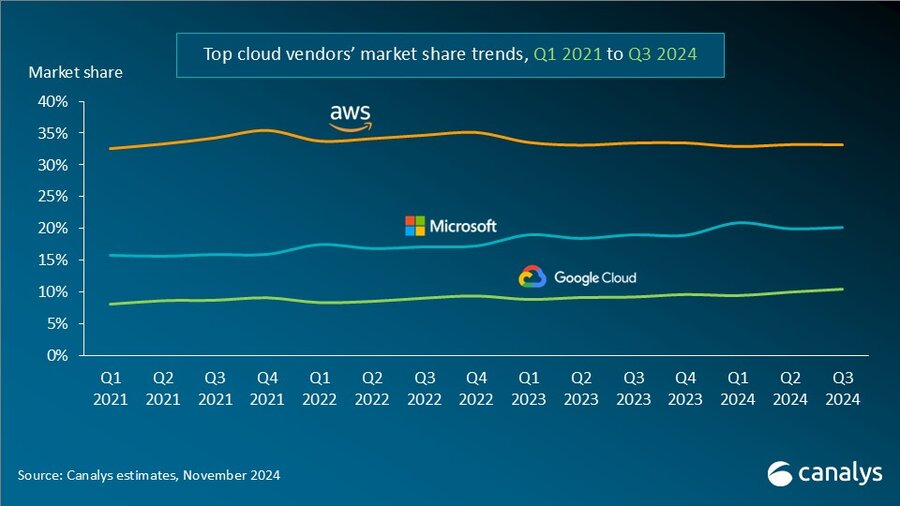
In Q3 2024, the cloud services market saw strong, steady growth. All three cloud hyperscalers reported positive returns on their AI investments, which have begun to contribute to their overall cloud business performance. These returns reflect a growing reliance on AI as a key driver for innovation and competitive advantage in the cloud.
With the increasing adoption of AI technologies, demand for high-performance computing and storage continues to rise, putting pressure on cloud providers to expand their infrastructure. In response, leading cloud providers are prioritizing large-scale investments in next-generation AI infrastructure. To mitigate the risks associated with under-investment – such as being unprepared for future demand or missing key opportunities – they have adopted over-investment strategies, ensuring their ability to scale offerings in line with the growing needs of their AI customers. Enterprises are convinced that AI will deliver an unprecedented boost in efficiency and productivity, so they are pouring money into hyperscalers’ AI solutions. Accordingly, cloud service provider capital spending (CAPEX) will sustain their rapid growth trajectories and are expected to continue on this path into 2025.
“Continued substantial expenditure will present new challenges, requiring cloud vendors to carefully balance their investments in AI with the cost discipline needed to fund these initiatives,” said Rachel Brindley, Senior Director at Canalys. “While companies should invest sufficiently in AI to capitalize on technological growth, they must also exercise caution to avoid overspending or inefficient resource allocation. Ensuring the sustainability of these investments over time will be vital to maintaining long-term financial health and competitive advantage.”
“On the other hand, the three leading cloud providers are also expediting the update and iteration of their AI foundational models, continuously expanding their associated product portfolios,” said Yi Zhang, Analyst at Canalys. “As these AI foundational models mature, cloud providers are focused on leveraging their enhanced capabilities to empower a broader range of core products and services. By integrating these advanced models into their existing offerings, they aim to enhance functionality, improve performance and increase user engagement across their platforms, thereby unlocking new revenue streams.”
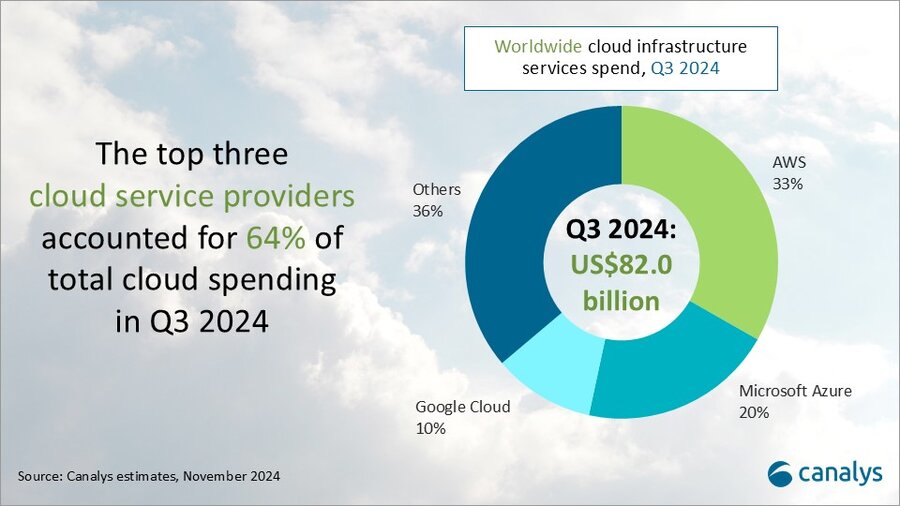
Amazon Web Services (AWS) maintained its lead in the global cloud market in Q3 2024, capturing a 33% market share and achieving 19% year-on-year revenue growth. It continued to enhance and broaden its AI offerings by launching new models through Amazon Bedrock and SageMaker, including Anthropic’s upgraded Claude 3.5 Sonnet and Meta’s Llama 3.2. It reported a triple-digit year-on-year increase in AI-related revenue, outpacing its overall growth by more than three times. Over the past 18 months, AWS has introduced nearly twice as many machine learning and generative AI features as the combined offerings of the other leading cloud providers. In terms of capital expenditure, AWS announced plans to further increase investment, with projected spending of approximately US$75 billion in 2024. This investment will primarily be allocated to expanding technology infrastructure to meet the rising demand for AI services, underscoring AWS’ commitment to staying at the forefront of technological innovation and service capability.
Microsoft Azure remains the second-largest cloud provider, with a 20% market share and impressive annual growth of 33%. This growth was partly driven by AI services, which contributed approximately 12% to the overall increase. Over the past six months, use of Azure OpenAI has more than doubled, driven by increased adoption by both digital-native companies and established enterprises transitioning their applications from testing phases to full-scale production environments. To further enhance its offerings, Microsoft is expanding Azure AI by introducing industry-specific models, including advanced multimodal medical imaging models, aimed at providing tailored solutions for a broader customer base. Additionally, the company announced new cloud and AI infrastructure investments in Brazil, Italy, Mexico and Sweden to expand capacity in alignment with long-term demand forecasts.
Google Cloud, the third-largest provider, maintained a 10% market share, achieving robust year-on-year growth of 36%. It showed the strongest AI-driven revenue growth among the leading providers, with a clear acceleration compared with the previous quarter. As of September 2024, its revenue backlog increased to US$86.8 billion, up from US$78.8 billion in Q2, signaling continued momentum in the near term. Its enterprise AI platform, Vertex, has garnered substantial user adoption, with Gemini API calls increasing nearly 14-fold over the past six months. Google Cloud is actively seeking and developing new ways to apply AI tools across different scenarios and use cases. It introduced the GenAI Partner Companion, an AI-driven advisory tool designed to offer service partners personalized access to training resources, enhancing learning and supporting successful project execution. In Q3 2024, Google announced over US$7 billion in planned data center investments, with nearly US$6 billion allocated to projects within the United States.
Separate statistics from Gartner corroborate hyperscale CAPEX optimism. Gartner predicts that worldwide end-user spending on public cloud services is on course to reach $723.4 billion next year, up from a projected $595.7 billion in 2024. All segments of the cloud market – platform-as-a-service (PaaS), software-as-a-service (SaaS), desktop-as-a-service (DaaS), and infrastructure-as-a-service (IaaS) – are expected to achieve double-digit growth.
While SaaS will be the biggest single segment, accounting for $299.1 billion, IaaS will grow the fastest, jumping 24.8 percent to $211.9 million.
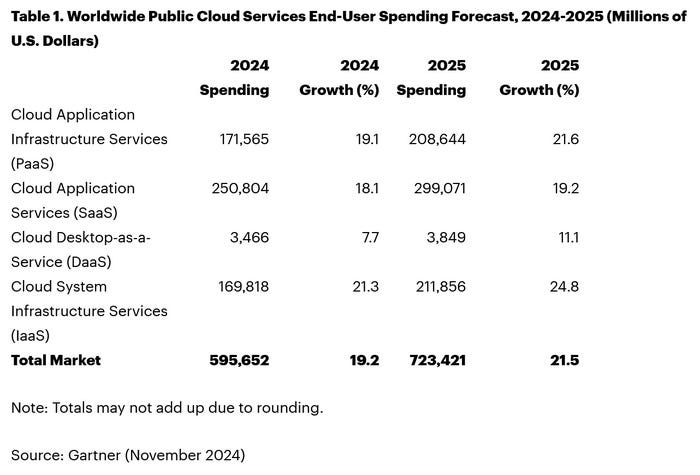
Like Canalys, Gartner also singles out AI for special attention. “The use of AI technologies in IT and business operations is unabatedly accelerating the role of cloud computing in supporting business operations and outcomes,” said Sid Nag, vice president analyst at Gartner. “Cloud use cases continue to expand with increasing focus on distributed, hybrid, cloud-native, and multicloud environments supported by a cross-cloud framework, making the public cloud services market achieve a 21.5 percent growth in 2025.”
……………………………………………………………………………………………………………………………………………………………………………………………………..
References:
https://canalys.com/newsroom/global-cloud-services-q3-2024
https://www.telecoms.com/public-cloud/ai-hype-fuels-21-percent-jump-in-q3-cloud-spending
Cloud Service Providers struggle with Generative AI; Users face vendor lock-in; “The hype is here, the revenue is not”
MTN Consulting: Top Telco Network Infrastructure (equipment) vendors + revenue growth changes favor cloud service providers
IDC: Public Cloud software at 2/3 of all enterprise applications revenue in 2026; SaaS is essential!
IDC: Cloud Infrastructure Spending +13.5% YoY in 4Q-2021 to $21.1 billion; Forecast CAGR of 12.6% from 2021-2026
IDC: Worldwide Public Cloud Services Revenues Grew 29% to $408.6 Billion in 2021 with Microsoft #1?
Synergy Research: Microsoft and Amazon (AWS) Dominate IT Vendor Revenue & Growth; Popularity of Multi-cloud in 2021
Google Cloud revenues up 54% YoY; Cloud native security is a top priority
WSJ: T-Mobile hacked by cyber-espionage group linked to Chinese Intelligence agency
According to the Wall Street Journal, T-Mobile’s network was hacked in a damaging Chinese cyber-espionage operation that successfully gained entry into multiple U.S. and international telecommunications companies.
Hackers linked to a Chinese intelligence agency were able to breach T-Mobile as part of monthslong campaign to spy on the cellphone communications of high-value intelligence targets. It is unclear what information, if any, was taken about T-Mobile customers’ calls and communications records.
“T-Mobile is closely monitoring this industry-wide attack, and at this time, T-Mobile systems and data have not been impacted in any significant way, and we have no evidence of impacts to customer information,” a company spokeswoman said. “We will continue to monitor this closely, working with industry peers and the relevant authorities.”
China’s multipronged spying operations have drawn warnings in the U.S. about their economic implications. Photo: Andy Wong/Associated Press
…………………………………………………………………………………………………………………………………………………………………………..
Salt Typhoon used sophisticated methods to infiltrate American telecom infrastructure through vulnerabilities including Cisco Systems routers, and investigators suspect the hackers relied on artificial intelligence or machine learning to further their espionage operations , people familiar with the matter said. The attackers penetrated at least some of that infrastructure over eight months or more.
In the broader hacking campaign, attackers were able to access cellphone lines used by an array of senior national security and policy officials across the U.S. government, in addition to politicians. The access allowed them to scoop up call logs, unencrypted texts and some audio from targets, in what investigators believe may have significant national-security ramifications.
Additionally, the hackers were able to access information from systems maintained by the carriers to comply with U.S. surveillance requests, raising further counterintelligence concerns. Investigators are still endeavoring to fully understand and have said the attack was carried out by the Salt Typhoon group. At Lumen, which doesn’t provide wireless service, the attackers didn’t steal any customer data or access its wiretap capabilities, according to people familiar with the matter.
Further investigation has revealed that the hackers sought access to data managed under U.S. law enforcement programs, including those governed by the Foreign Intelligence Surveillance Act (FISA). This act authorizes American intelligence agencies to monitor suspected foreign agents’ communications. By targeting these programs, Chinese hackers may have aimed to infiltrate sensitive government communications channels, gaining insights into U.S. surveillance efforts.
Some foreign telecommunications firms were also compromised in the hacks, including in countries that maintain close intelligence-sharing partnerships with the U.S., people familiar with the matter said. Earlier this week, the Biden administration acknowledged in a public statement some details about the nature of the “broad and significant” hack that were previously reported by the WSJ.
Chinese government-linked hackers had compromised networks at multiple telecommunications companies “to enable the theft of customer call records data, the compromise of private communications of a limited number of individuals who are primarily involved in government or political activity, and the copying of certain information that was subject to U.S. law enforcement requests pursuant to court orders,” the statement from the FBI and Cybersecurity and Infrastructure Security Agency (CISA) said. “We expect our understanding of these compromises to grow as the investigation continues,” they added.
References:
https://www.wsj.com/tech/cybersecurity/u-s-wiretap-systems-targeted-in-china-linked-hack-327fc63b
https://www.newsweek.com/fbi-chinese-cyber-espionage-multiple-telecom-networks-1985617
China backed Volt Typhoon has “pre-positioned” malware to disrupt U.S. critical infrastructure networks “on a scale greater than ever before”
FBI and MI5 Chiefs Issue Joint Warning: Chinese Cyber Espionage on Tech & Telecom Firms
Cybersecurity threats in telecoms require protection of network infrastructure and availability
FT: A global satellite blackout is a real threat; how to counter a cyber-attack?
Demythifying Cyber security: IEEE ComSocSCV April 19th Meeting Summary
StrandConsult Analysis: European Commission second 5G Cybersecurity Toolbox report
Cisco to lay off more than 4,000 as it shifts focus to AI and Cybersecurity
Pente Networks, MosoLabs and Alliance Corp collaborate for Private Cellular Network in a Box
Pente Networks, a private wireless network core, orchestration and management software company; MosoLabs, a global company building solutions for LTE and 5G private and neutral host networks; are collaborating with Alliance Corporation to deliver a complete Private Cellular Network in a Box. It’s a pre-built, plug and play kit with multiple options available (see below) to cater to different use cases, such as surveillance, fixed wireless access and point of sale.
By including already provisioned devices, customers can use their own highly secure and robust private cellular network almost immediately. The solution speeds up and simplifies private network deployment for integrators, IT departments and small businesses; even those with little to no private wireless experience.
Alliance’s Network in a Box is a pre-configured bundle designed with everything needed to deploy and then operate an end-to-end private wireless 4G LTE or 5G wireless network. Alliance’s professional services team uses the Pente HyperCore platform to pre-integrate with MosoLabs’ Canopy indoor and outdoor radios and provision selected end-user devices, SIMs and eSIMs. Alliance then assembles an enclosure that houses all the network equipment, including the HyperCore EdgeMini, a full Evolved Packet Core (EPC) and 5G Core in one. The pre-built kits and radios are ready for simple installation at the desired location. Once connected, the network is immediately up and running, with the devices instantly recognized by the network. No additional programming or configuration is needed.
Three ready made bundles are:
- Network in a Box with Fixed Wireless Access WiFi
- Network in a Box with Video Surveillance
- Network in a Box with Point of Sale
Each bundle includes the Pente HyperCore EdgeMini, Moso Canopy Small Cell Radios, and select devices all preconfigured to work together instantly.

“Our goal is to make private networks accessible to everyone,” says Dan Ortega, Senior Sales Engineer, Alliance Corporation. “With Pente and MosoLabs, we can pre-configure an out-of-the-box functional kit so that all our customers, regardless of their size or use case, can take advantage of everything private networks have to offer.”
Alliance support is available for any questions, and they offer additional services needed such as RF planning, SAS registration, and network monitoring and management. Alliance can also support customers who want to scale their network to support additional services, applications, and IoT devices.
Alliance Corporation distributes equipment for wireless network infrastructure, in-building signal enhancement solutions, cellular broadband systems, next-generation 5G networks, fixed wireless and private enterprise networks, as well as cellular solutions that connect the Internet of Things. Alliance provides pre and post-sale technical support, engineering, radio configuration, and training services. Alliance serves telecommunication carriers, fixed wireless broadband service providers, OEMs, systems integrators, resellers, and contractors in education, enterprise, federal government, military, healthcare, industrial, municipal government, oil and gas, mining, public safety, security, utilities, and transportation industries.
Alliance US Holding, LP owns Alliance Corporation, GetWireless, TESSCO Technologies, and DiscountCell and is owned by entities affiliated with Lee Equity Partners and Twin Point Capital
About Pente:
Pente provides the world’s most advanced LTE & 5G SA mobile core and network management solution supporting operators and enterprises with both fully virtualized mobile core networks and private cellular network solutions. With over 1000 APIs, Pente’s mobile core and network orchestration platform, enables the fastest implementation and integration available on the market today. Pente currently manages millions of IT-grade SIMs for customers around the globe on networks serving corporate enterprise, industrial, healthcare, education, the public sector and military applications. Pente has strategic customers and partnerships with leading MNOs, MVNOs, enterprises, device manufacturers, managed service providers and system integrators.
Visit pentenetworks.com or call 1-888-821-4797.
About MosoLabs:
MosoLabs is focused on building world-class 4G and 5G hardware with a unified network management platform and an innovative application software suite for private wireless and neutral hosts networks. Our mission is to simplify the entire private network experience – from planning to deployment to management – and create products to support new use cases. We develop fully integrated products that simplify time-to-market and deployment complexity for global enterprises and managed service providers. Learn more at www.mosolabs.com.
References:
https://www.pentenetworks.com/networkinabox
Tata Consultancy Services: Critical role of Gen AI in 5G; 5G private networks and enterprise use cases
SNS Telecom & IT: $6 Billion Private LTE/5G Market Shines Through Wireless Industry’s Gloom
SNS Telecom & IT: Private 5G Network market annual spending will be $3.5 Billion by 2027
HPE Aruba Launches “Cloud Native” Private 5G Network with 4G/5G Small Cell Radios
Nokia and Kyndryl extend partnership to deliver 4G/5G private networks and MEC to manufacturing companies
BT and Ericsson in partnership to provide commercial 5G private networks in the UK
Ericsson and e& (UAE) sign MoU for 6G collaboration vs ITU-R IMT-2030 framework
Ericsson and United Arab Emirates (UAE) network operator e& have signed of a Memorandum of Understanding (MoU), for the collaborative exploration of 6G technology, its use cases and future network evolution. It will also include a series of technical discussions and engagements aimed at jointly exploring key 6G technology concepts.
The purpose of this MoU is unclear, as the definition work for 6G RANs will be done in ITU-R WP5D with the specs likely to come from 3GPP. So any 6G MoU would have to be based on the ITU-R IMT-2030 framework (see figures below and References).
Khalid Murshed, Chief Technology and Information Officer, e& UAE, says: “e& UAE has pioneered new technologies since 1976 powering people and societies. This collaboration is a testament to our dedication for driving the digital future and pushing the boundaries of a more connected and technologically advanced future. We are thrilled to partner with Ericsson on exploring 6G and its future network evolution.”
Ekow Nelson, Vice President and Head of Global Customer Unit for e& at Ericsson Middle East and Africa, says: “We have barely scratched the surface with 5G which will overtake 4G and become the dominant mobile technology after 2027 and, with 5G Standalone and 5G Advanced, realize its transformative potential over the next several years. At the same time, we have started the proactive approach to 6G research with our partners to shape the next generation of mobile networks. Collaborating closely with e& UAE, we aim to leverage our shared expertise to drive progress in the development of 6G for the United Arab Emirates, and the wider region.”

Photo credit: Ericsson
………………………………………………………………………………………………………..
From the ITU-R IMT-2030 framework:
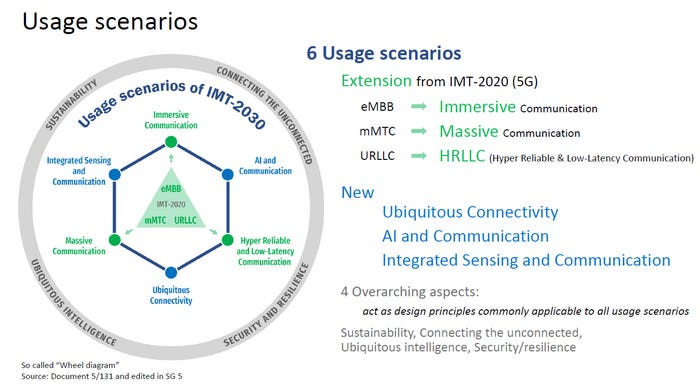
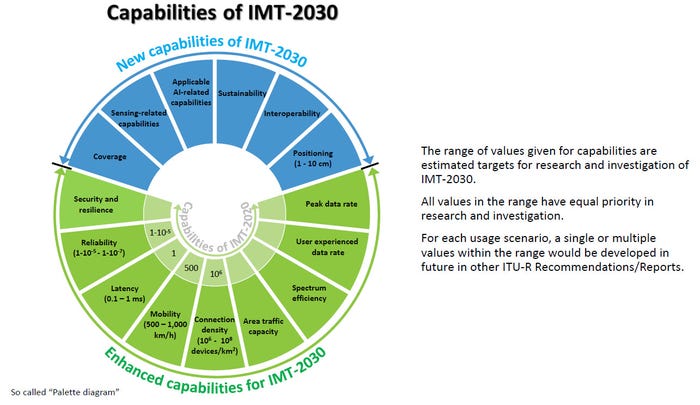
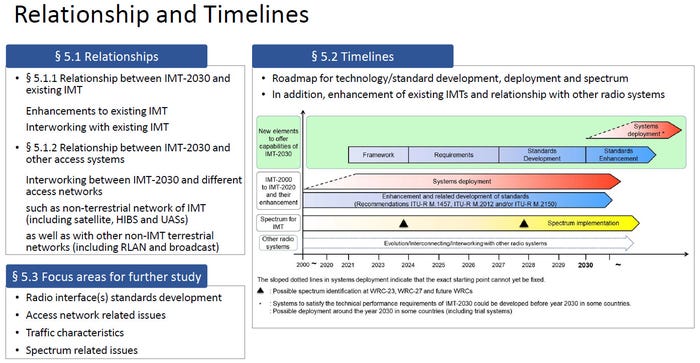
References:
ITU-R: IMT-2030 (6G) Backgrounder and Envisioned Capabilities
ITU-R WP5D invites IMT-2030 RIT/SRIT contributions
Highlights of 3GPP Stage 1 Workshop on IMT 2030 (6G) Use Cases
NGMN issues ITU-R framework for IMT-2030 vs ITU-R WP5D Timeline for RIT/SRIT Standardization
FT: New benchmarks for Gen AI models; Neocloud groups leverage Nvidia chips to borrow >$11B
The Financial Times reports that technology companies are rushing to redesign how they test and evaluate their Gen AI models, as current AI benchmarks appear to be inadequate. AI benchmarks are used to assess how well an AI model can generate content that is coherent, relevant, and creative. This can include generating text, images, music, or any other form of content.
OpenAI, Microsoft, Meta and Anthropic have all recently announced plans to build AI agents that can execute tasks for humans autonomously on their behalf. To do this effectively, the AI systems must be able to perform increasingly complex actions, using reasoning and planning.
Current public AI benchmarks — Hellaswag and MMLU — use multiple-choice questions to assess common sense and knowledge across various topics. However, researchers argue this method is now becoming redundant and models need more complex problems.
“We are getting to the era where a lot of the human-written tests are no longer sufficient as a good barometer for how capable the models are,” said Mark Chen, senior vice-president of research at OpenAI. “That creates a new challenge for us as a research world.”
The SWE Verified benchmark was updated in August to better evaluate autonomous systems based on feedback from companies, including OpenAI. It uses real-world software problems sourced from the developer platform GitHub and involves supplying the AI agent with a code repository and an engineering issue, asking them to fix it. The tasks require reasoning to complete.
“It is a lot more challenging [with agentic systems] because you need to connect those systems to lots of extra tools,” said Jared Kaplan, chief science officer at Anthropic.
“You have to basically create a whole sandbox environment for them to play in. It is not as simple as just providing a prompt, seeing what the completion is and then evaluating that.”
Another important factor when conducting more advanced tests is to make sure the benchmark questions are kept out of the public domain, in order to ensure the models do not effectively “cheat” by generating the answers from training data, rather than solving the problem.
The need for new benchmarks has also led to efforts by external organizations. In September, the start-up Scale AI announced a project called “Humanity’s Last Exam”, which crowdsourced complex questions from experts across different disciplines that required abstract reasoning to complete.
Meanwhile, the Financial Times recently reported that Wall Street’s largest financial institutions had loaned more than $11bn to “neocloud” groups, backed by their possession of Nvidia’s AI GPU chips. These companies include names such as CoreWeave, Crusoe and Lambda, and provide cloud computing services to tech businesses building AI products. They have acquired tens of thousands of Nvidia’s graphics processing units (GPUs) through partnerships with the chipmaker. With capital expenditure on data centres surging, in the rush to develop AI models, the Nvidia’s AI GPU chips have become a precious commodity.
Nvidia’s chips have become a precious commodity in the ongoing race to develop AI models © Marlena Sloss/Bloomberg
…………………………………………………………………………………………………………………………………
The $3tn tech group’s allocation of chips to neocloud groups has given confidence to Wall Street lenders to lend billions of dollars to the companies that are then used to buy more Nvidia chips. Nvidia is itself an investor in neocloud companies that in turn are among its largest customers. Critics have questioned the ongoing value of the collateralised chips as new advanced versions come to market — or if the current high spending on AI begins to retract. “The lenders all coming in push the story that you can borrow against these chips and add to the frenzy that you need to get in now,” said Nate Koppikar, a short seller at hedge fund Orso Partners. “But chips are a depreciating, not appreciating, asset.”
References:
https://www.ft.com/content/866ad6e9-f8fe-451f-9b00-cb9f638c7c59
https://www.ft.com/content/fb996508-c4df-4fc8-b3c0-2a638bb96c19
https://www.ft.com/content/41bfacb8-4d1e-4f25-bc60-75bf557f1f21
Tata Consultancy Services: Critical role of Gen AI in 5G; 5G private networks and enterprise use cases
Reuters & Bloomberg: OpenAI to design “inference AI” chip with Broadcom and TSMC
AI adoption to accelerate growth in the $215 billion Data Center market
AI Echo Chamber: “Upstream AI” companies huge spending fuels profit growth for “Downstream AI” firms
AI winner Nvidia faces competition with new super chip delayed
Tata Consultancy Services: Critical role of Gen AI in 5G; 5G private networks and enterprise use cases
“In the realm of network management, Generative AI could play a critical role in predicting 5G data flow patterns and optimizing performance, ultimately improving the customer experience. Similarly, in the area of security, Gen AI could be pivotal in identifying and predicting threats before they occur, strengthening overall network security,” Mayank Gupta, Global Head (Sales and Strategy Network Solutions and Services) at Tata Consultancy Services (TCS), told the Economic Times of India.
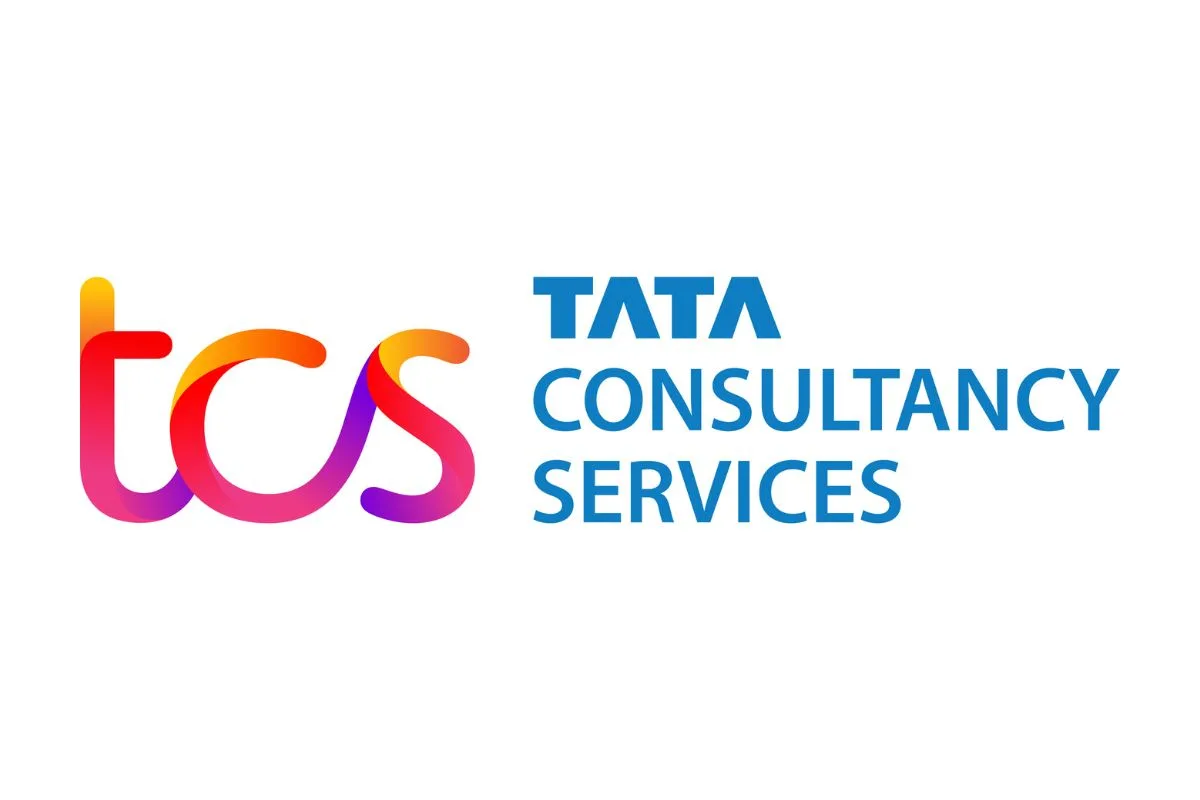
5G adoption has been happening in stages he said. When asked about the 5G monetization challenges, Gupta opined that one of the main challenges has been fully understanding the business case or use case required by the industry. “It is not the traditional ‘design, deploy and get paid’ model. Instead, you have to engage with the industry, collaborate with various stakeholders and take an ecosystem approach. It is essential to understand the specific business needs, define the problem and then build solutions around that,” Gupta said.
“Two years ago, 5G was moving at a very slow pace, but it has gained significant momentum. Globally, the U.S. and Canada are leading the way, while countries like South Korea and Brazil are accelerating their adoption, largely due to the liberalization of their spectrum. From a deployment standpoint, mobile private networks are among the first areas seeing significant progress, with deployments growing rapidly. “The focus is shifting from just connectivity to a broader transformation of operational technology,” he added.
Over 50% of 5G mobile data is now coming from the enterprise sector, which has become a major focus. Different countries prioritize different use cases based on their needs.
Watch the video interview here:
…………………………………………………………………………………………………………………………………………………………………………………………………………………………………………………………….
References:
Tata Communications launches global, cloud-based 5G Roaming Lab
5G Made in India: Bharti Airtel and Tata Group partner to implement 5G in India
LightCounting & TÉRAL RESEARCH: India RAN market is buoyant with 5G rolling out at a fast pace
Reliance Jio in talks with Tesla to deploy private 5G network for the latter’s manufacturing plant in India
Communications Minister: India to be major telecom technology exporter in 3 years with its 4G/5G technology stack
India to set up 100 labs for developing 5G apps, business models and use-cases
Adani Group to launch private 5G network services in India this year
Telco spending on RAN infrastructure continues to decline as does mobile traffic growth
Telco spending on radio access network (RAN) infrastructure, which is the largest share of capex, has dropped sharply in the last couple of years. It fell 11% in 2023, to about $40 billion, according to Informa owned market research firm Omdia (see References below for Dell’Oro’s numbers).
For 2024, Omdia predicts another decline of between 7% and 9%. Instead of buying new equipment, telcos have used existing supplies in their where houses.
Traffic growth rates also appear to have slowed. The graphic used in Ericsson’s latest mobility report pictures this very clearly, showing a church steeple of a traffic spike in 2019 and 2020 before a shallower downward-sloping gradient to the first half of 2024. That’s shown in this chart:
.jpg?width=700&auto=webp&quality=80&disable=upscale)
Source: Ericsson
Ericsson’s latest numbers, available through its mobility visualizer tool, shows the monthly volume of global mobile data rose by just 4.34% in the second quarter of 2024, compared with the first quarter. This is much lower than the rate of 10.76% Ericsson observed in the corresponding quarter four years earlier. The actual increase in 2024 was 6.27 exabytes. In 2020, it was 4.86 exabytes.
RAN product revenues have been falling at their sharpest rate in many years despite the 6.27-exabyte increase in monthly data volumes that happened in the second quarter. There are no signs that current 4G and 5G networks are about to keel over beneath an avalanche of data. It remains to be seen whether mobile networks are sufficiently robust to cope with many more exabytes of mobile data traffic or if telcos care about any service problems caused by congestion due to increased traffic.
There is also no obvious correlation between traffic growth and expenditure, according to Coleago Consulting. Spain’s Telefónica supported 17,054 petabytes of data on its global networks in 2015, its annual reports show. By 2023, the amount had rocketed to 146,074. Yet its capital intensity has fallen from more than 17% to just 14% over this period. Energy use, a proxy for operating costs, is also down, dropping from about 6,578 gigawatt hours in 2015 to 6,012 last year. Despite all that data consumption by its customers, Elisa’s capital intensity last year was less than 15%.
In Germany, the average monthly data usage per mobile customer (rather than per capita) amounted to 7.4 Gbytes and this may have risen to around 8 Gbytes in 1H 2024. In 2024, mobile data consumption in Finland was around 10 times higher compared to Germany. In Finland mobile operators have implemented 5G-SA and sell a user experience in terms of speed (Mbits/s) as opposed to data volume (Gbytes). As of October 2024, Elisa Finland offered a speed of 300 Mbits/s with unlimited data volume for €34.99. By contrast, in Germany, Telekom’s offer for 20 Gbytes is priced at €39.95 per month. For unlimited data usage Telekom charges €84.95, which is 2.5 times more costly than Elisa’s unlimited offer. It is unreasonable to assume that there is no price elasticity of demand. Surely, if prices in Germany were like those in Finland, monthly mobile data usage per customer would be much higher.
Monthly average revenue per user (ARPU) for a postpaid customer of Deutsche Telekom, Germany’s biggest telco, has fallen from €22 (US$23.7) before the launch of 5G to about €20 ($21.6) for the most recent quarter. Clearly, cost realities are especially awkward for Europe’s telcos, which have refused to give up their “fair share” argument that big content companies should pay for network usage because of all the traffic they supposedly generate. Critics disagree, saying that the telco’s own customers are the traffic generators, and they have already paid for it, even if pricing schemes do not help telcos to grow their sales.
………………………………………………………………………………………………………………………………………………………………………………………………………………………………..
References:
https://www.lightreading.com/5g/data-traffic-growth-or-decline-there-s-no-upside-for-telecom
https://www.coleago.com/insights/the-end-of-telecoms-history-not-really/
Analysys Mason & Light Reading: cellular data traffic growth rates are decreasing
Dell’Oro: Global RAN Market to Drop 21% between 2021 and 2029
Dell’Oro: RAN market still declining with Huawei, Ericsson, Nokia, ZTE and Samsung top vendors
Dell’Oro & Omdia: Global RAN market declined in 2023 and again in 2024
Dell’Oro: RAN market declines at very fast pace while Mobile Core Network returns to growth in Q2-2023
China’s mobile data consumption slumps; Apple’s market share shrinks-no longer among top 5 vendors
Analysts: Telco CAPEX crash looks to continue: mobile core network, RAN, and optical all expected to decline
Ookla: T-Mobile and Verizon lead in U.S. 5G FWA
T‑Mobile achieves record 5G Uplink speed with 5G NR Dual Connectivity
T-Mobile US claims it broke a world record with its 5G standalone (SA) network via a new feature called New Radio Dual Connectivity (5G DC) [1.]. With 5G DC. The so called “Un-carrier” was able to massively increase uplink throughput and capacity, reaching peak speeds of 2.2 Gbps — that’s the fastest recorded anywhere in the world — and demonstrates the technology’s potential to create serious efficiencies in how data is transmitted from devices to the network.
Note 1. New Radio Dual Connectivity (NR-DC) is a dual connectivity configuration that uses the 5G standalone core (specified by 3GPP but not standardized by ITU-R or ITU-T). In this configuration, both the primary and secondary RAN nodes are 5G gNBs. NR-DC was was specified in 3GPP Release 15 along with simultaneous receive (Rx) / transmit (Tx) band combinations for NR CA/DC.
…………………………………………………………………………………………………………………………………..
To put T-Mo’s 2.2 Gbps uplink speed into context, the latest report from connectivity data specialist Ookla puts the median mobile upload speed in the U.S. at 8.41 Mbps, although that’s across networks. T-Mobile is ahead of major rivals AT&T and Verizon with a median upload speed of 12.19 Mbps.
In June Ookla stated that while U.S. network operators have invested heavily in improving 5G download speeds, “5G upload and latency performance need more attention.” Its data at the time showed Verizon and T-Mobile had comparable 5G upload at just above 15 Mbps, while AT&T lagged somewhat at closer to the 10 Mbps mark.
5G DC enables the Un-carrier to aggregate 2.5 GHz and mmWave spectrum, allowing for an insane boost to uplink throughput and capacity. In this test, T-Mobile was able to allocate 60% of the mmWave radio resources for uplink where previous use cases typically allowed up to 20%. Completed on T-Mobile’s 5G SA production network in SoFi Stadium in Southern California with equipment and 5G DC solution from Ericsson and a mobile test smartphone powered by a flagship Snapdragon® X80 5G Modem-RF System from Qualcomm Technologies, Inc., this test changes the game for providers looking to offer customers and businesses the best experience possible at crowded events.
“With 5G DC, T-Mobile is pushing the boundaries of what’s possible to create better experiences in the places that matter most to our customers,” said Ulf Ewaldsson, President of Technology at T-Mobile. “This accomplishment is a testament to the network we’ve built over the last five years and our ability to deliver unparalleled capabilities that extend beyond the devices in our pockets.”
For those in the know, download speeds typically reign as the top network performance metric, but with recent strides in uplink capabilities and increasingly demanding tasks, upload speed is becoming more important than ever, especially for live events, mobile gaming and extended reality applications.
Because of this, SoFi Stadium served as the perfect test site for 5G DC. Every year, millions of people flock to the stadium for the latest football game or to catch their favorite artists in concert. Naturally, all these people want to post, livestream and share their experiences in real-time, which can sometimes be a challenge at crowded events with limited capacity. Not to mention broadcast crews who need to upload high-definition content to production teams in real-time for those watching at home. With 5G DC and T-Mobile, all of this gets done faster than ever, alleviating posting FOMO and production crew headaches.
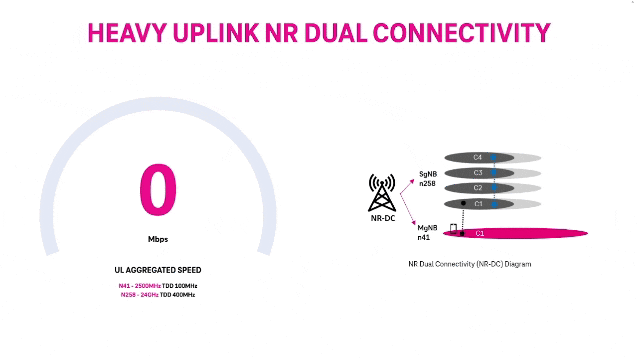
Mårten Lerner, Head of Product Area Networks at Ericsson, said: “High uplink speeds are essential for delivering immersive experiences and reliable 5G connectivity. This mirrors one of our key objectives with the recent launch of Ericsson 5G Advanced, which is to elevate user experience by enhancing network performance for more interactive applications. This 5G uplink speed milestone, achieved with T-Mobile and Qualcomm, underscores our commitment to taking user experience to unprecedented levels.”
“We are incredibly proud to achieve yet another world record with T-Mobile. This groundbreaking achievement shows what could be possible with 5G DC and how it can bring new, unparalleled experiences to consumers, especially at large events like football games and concerts,” said Sunil Patil, Vice President, Product Management, Qualcomm Technologies, Inc. “We will continue our close collaboration with global innovators like T-Mobile and Ericsson to push the boundaries and unlock the full potential of 5G.”
5G network covers more than 330 million people across two million square miles. More than 300 million people nationwide are covered by T-Mobile’s super-fast Ultra Capacity 5G with over 2x more square miles of coverage than similar mid-band 5G offerings from the Un-carrier’s closest competitors.
For more information on T-Mobile’s network, visit T-Mobile.com/coverage.
References:
https://www.t-mobile.com/news/network/t-mobile-shatters-for-5g-uplink-speed
https://www.telecoms.com/5g-6g/t-mobile-us-uses-5g-dc-to-claim-uplink-speed-record
Telstra achieves 340 Mbps uplink over 5G SA; Deploys dynamic network slicing from Ericsson
Finland’s Elisa, Ericsson and Qualcomm test uplink carrier aggregation on 5G SA network
Ericsson and MediaTek set new 5G uplink speed record using Uplink Carrier Aggregation
Samsung-Mediatek 5G uplink trial with 3 transmit antennas
Dish Wireless with Qualcomm Technologies and Samsung test simultaneous 5G 2x uplink and 4x downlink carrier aggregation
BT, Nokia and Qualcomm demonstrate 2CC CA on uplink of a 5G SA network
Bell Canada buying Ziply Fiber for C$7 billion; will become 3rd largest fiber ISP in U.S.
Bell Canada (owned by BCE) has entered into a definitive agreement to acquire Ziply Fiber in a deal with a transaction value of around C$7 billion (C$3.65 billion in cash plus the assumption of debt). The acquisition is expected to close in the second half of 2025, subject to certain customary closing conditions and the receipt of certain regulatory approvals. Following the deal closure, Ziply Fiber, a fiber Internet provider in the Pacific Northwest of the U.S, will operate as a separate business unit and will continue to be headquartered in Kirkland, Washington.
BCE said the acquisition enhances Bell’s growth profile and strategic position by giving it a foothold in the large, underpenetrated U.S. fiber market. The deal will increase its scale, diversify its operating footprint and unlock significant growth opportunities. This deal would make Bell Canada the third largest fiber internet services provider in North America, after AT&T and Verizon. It follows Verizon’s recent announcement that it’s acquiring Frontier Communications for $20 billion.
Currently, AT&T passes 28 million locations with fiber, and Verizon passes 17.8 million.

AT&T says it will pass 30 million locations by the end of 2025 and may ultimately choose to pass 45 million locations.
Verizon says it will pass 30 milli
on locations after the Frontier buyout closes.
When the Ziply buy-out is finalized, Bell Canada will have about 9 million fiber locations, combining its 7.7 million locations in Canada with Ziply’s 1.3 million in the U.S. Bell Canada said it has a goal of passing 12 million fiber locations in North America by 2028.
Lumen’s original target for its residential Quantum Fiber expansion was 12 million locations, but the company cut its target to between 8 million and 10 million. Lumen expects to exceed 500,000 new passings in 2024.
………………………………………………………………………………………………………………………………………………………………………………….
Ziply was founded in May 2020 when it purchased network assets from Frontier in the states of Washington, Oregon, Idaho and Montana. The company was founded by CEO Harold Zeitz and Steve Weed, who’s the executive chairman. Ziply’s current owners are Wave Division Capital and Searchlight Capital, which are selling to Bell Canada.
Zeitz told Fierce Network about two-thirds of Ziply’s broadband footprint is currently fiber, and it’s working to overbuild its remaining copper plant with fiber. “In addition to building in the ILEC footprint, we’re also building outside that footprint in adjacent markets,” said Zeitz. By “adjacent markets” he was referring to the many towns “adjacent” to Ziply markets where Lumen Technologies is the main broadband provider. Ziply has a goal to build fiber in about 80% of its footprint, but it may expand that. And under Bell’s ownership it plans to build 20% faster.
“We just want to deliver a refreshingly great experience to all the towns in our four-state area,” Zeitz said. “We think there’s tremendous opportunity organically. There are 50-60 million households that don’t have fiber. I think over time we’ll see more acquisitions,” he added.
…………………………………………………………………………………………………………………………………………………………………………………………………………………………………….
Analysts at AlixPartners said there are more than 400 small fiber providers in the U.S. that could be acquired by investors or larger fiber optic telcos. The firm conducted a survey in August of 60 executives at different fiber companies and 1,000 U.S. residents. According to the survey, 93% of respondents said consolidation is happening or will happen soon. “It’s clear based on the results that this is a buyer’s market—but sellers can use this knowledge to their advantage as well, the firm noted.
…………………………………………………………………………………………………………………………………………………………………………………………………………………………………….
References:
https://www.nasdaq.com/articles/bces-bell-canada-buy-ziply-fiber-around-c-7-bln-cash-debt-deal
SK Telecom unveils plans for AI Infrastructure at SK AI Summit 2024
Introduction:
During the two-day SK AI Summit 2024 [1.], SK Telecom CEO Ryu Young-sang unveiled the company’s comprehensive strategy which revolves around three core components: AI data centers (AIDCs), a cloud-based GPU service (GPU-as-a-Service, GPUaaS), and Edge AI. SK Telecom is planning to construct hyperscale data centers in key regions across South Korea, with the goal of becoming the AIDC hub in the Asia Pacific region. Additionally, the company will launch a cloud-based GPU service to address the domestic GPU shortage and introducing ‘Edge AI’ to bridge the gap between AIDC and on-device AI. This innovative approach aims to connect national AI infrastructure and expand globally, in collaboration with partners both in South Korea and abroad.
Note 1. The SK AI Summit is an annual event held by the SK Group, where global experts in various AI fields gather to discuss coexistence in the era of artificial general intelligence (AGI) and seek ways to strengthen the ecosystem.

………………………………………………………………………………………………………………………………………………………………………..
Constructing AI Data Centers in South Korea’s key regions:
SK Telecom plans to start with hyperscale AIDCs that require more than 100 megawatts (MW) in local regions, with future plans to expand its scale to gigawatts (GW) or more, to leap forward as the AIDC hub in the Asia Pacific region.
By extending the AIDC to national bases, centers can secure a stable power supply through the utilization of new renewable energy sources such as hydrogen, solar and wind power, and easily expand to global markets through submarine cables. SK Telecom anticipates building AIDC cost-effectively when the data center combines SK Group’s capabilities in high-efficiency next-generation semiconductors, immersion cooling, and other energy solutions, along with its AI cluster operation.
Prior to this, SK Telecom plans to open an AIDC testbed in Pangyo, Korea, in December, which combines the capabilities of the SK Group and various solutions owned by partner companies. This facility, where all three types of next-generation liquid cooling solutions—direct liquid cooling, immersion cooling, and precision liquid cooling—are deployed, will be the first and only testbed in Korea. It will also feature advanced AI semiconductors like SK hynix’s HBM, as well as GPU virtualization solutions and AI energy optimization technology. This testbed will provide opportunities to observe and experience the cutting-edge technologies of a future AIDC.
Supplying GPU via cloud to metropolitan areas:
SK Telecom plans to launch a cloud-based GPU-as-a-Service (GPUaaS) by converting the Gasan data center, located in the metropolitan area, into an AIDC to quickly resolve the domestic GPU shortage.
Starting in December, SK Telecom plans to launch a GPUaaS with NVIDIA H100 Tensor Core GPU through a partnership with U.S.-based Lambda. In March 2025, SK Telecom plans to introduce NVIDIA H200 Tensor Core GPU in Korea, gradually expanding to meet customer demand.
Through the AI cloud services (GPUaaS), SKT aims to enable companies to develop AI services easily and at a lower cost, without needing to purchase their own GPUs, ultimately supporting the vitalization of Korea’s AI ecosystem.
Introducing ‘Edge AI’ to open a new opportunity in telco infrastructure:
SK Telecom plans to introduce ‘Edge AI,’ which can narrow the gap between AIDC and on-device AI, using the nationwide communication infrastructure.
Edge AI is an infrastructure that combines mobile communication networks and AI computing, offering advantages in reduced latency, enhanced security, and improved privacy compared to large-scale AIDCs. Additionally, it enables large-scale AI computing, complementing the existing AI infrastructure, compared to on-device AI.
SKT is currently conducting research on advanced technologies and collaborating with global partners to build AIDC-utilizing communication infrastructure and develop customized servers. The company is also carrying out various proof of concept (PoC) projects across six areas, including healthcare, AI robots, and AI CCTV, to discover specialized Edge AI services.
“So far, the competition in telecommunications infrastructure has been all about connectivity, namely speed and capacity, but now the paradigm of network evolution should be changed,” said Ryu Young-sang, CEO of SK Telecom. “The upcoming 6G will evolve into a next-generation AI infrastructure where communication and AI are integrated.”
Developing a comprehensive AIDC solution to enter global market:
SK Telecom plans to develop a comprehensive AIDC solution that combines AI semiconductors, data centers, and energy solutions through collaboration with AI companies in Korea and abroad, with the aim of entering the global market.SK Telecom aims to lead the global standardization of Edge AI and collaborate on advanced technology research, while working towards the transition to 6G AI infrastructure.
………………………………………………………………………………………………………………….
About SK Telecom:
SK Telecom has been leading the growth of the mobile industry since 1984. Now, it is taking customer experience to new heights by extending beyond connectivity. By placing AI at the core of its business, SK Telecom is rapidly transforming into an AI company with a strong global presence. It is focusing on driving innovations in areas of AI Infrastructure, AI Transformation (AIX) and AI Service to deliver greater value for industry, society, and life.
For more information, please contact [email protected] or visit our LinkedIn page www.linkedin.com/company/sk-telecom
………………………………………………………………………………………………………………….
References:
SKT-Samsung Electronics to Optimize 5G Base Station Performance using AI
SK Telecom (SKT) and Nokia to work on AI assisted “fiber sensing”




